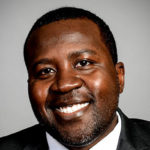- Three Damages Questions for the Supreme Court – Cochlear Corp. petitioned the Supreme Court to review the Federal Circuit’s damages decision and recently received an amicus brief in support.
- Threshold Issues, Misdirected Lawyering, and a Frustrated Federal Circuit – Earlier this October, the Federal Circuit remanded AntennaSys, Inc., v. AQYR Technologies, Inc. to resolve the claim construction issues left undecided by the lower court and expressing their disdain towards unhelpful arguments from both parties.
- Apple Hit With $503M Verdict In VirnetX Patent Retrial – After the Federal Circuit vacated the damages award, on remand, the lower court jury awarded similar damages against Apple.
Here’s the latest.
Three Damages Questions for the Supreme Court
Reported by Dennis Crouch at Patently-O
The Supreme Court is reviewing Cochlear Corp.’s petition for writ of certiorari considering three questions regarding the Federal Circuit’s affirming of the damages award. The Alfred E. Mann Foundation originally won its willful infringement suit in Cochlear Corp. v. Alfred E. Mann Foundation, but the district court then found some of the claims indefinite in a bench trial, awarded Cochlear a new trial for damages, and awarded a JMOL of no willful infringement. The Federal Circuit then reinstated the verdict of willful infringement. In the new trial, the court reinstated the damages award and the jury’s finding of willfulness and doubled the damages award. The Federal Circuit affirmed the decision. Dennis Crouch reviews the petition which recently received an amicus brief from a group of intellectual property professors.
A group of law professors have filed an amicus brief supporting certiorari of question 2: “to resolve the circuit split on how to treat general jury damages verdicts when the underlying verdict is overturned in part.”. . .The second question highlights the 1884 Supreme Court decision of Maryland v. Baldwin. Baldwin is an odd case to cite — it is an estates case involving inheritance and common-law marriage. But, the key of the case is its holding that a general verdict becomes faulty when one of several possible claims is found in error.
The petition also examines the post-infringement evidence to be considered when calculating damages. Cochlear argues that there should be an upper bound on the time limit for this evidence. The petition further questions the guidance for apportionment of patent damages laid out by the Supreme Court.
For more information, see our coverage.
Threshold Issues, Misdirected Lawyering, and a Frustrated Federal Circuit
Reported by Jessica Zafonte at JD Supra
The Federal Circuit issued an opinion in AntennaSys, Inc., v. AQYR Technologies, Inc. vacating the district court’s granting of summary judgment for AQYR. Jessica Zafonte recaps the decision pertaining to the license agreement between Antennasys, a partial owner of the patent owner, and Windmill and its subsidiary, AQYR. Antennasys did not receive its desired claim construction, but requested summary judgment which was granted to Windmill and AQYR. Antennasys appealed the lower court’s claim construction which AQYR argued that Antennasys lacked standing. The Federal Circuit found that Antennasys did have standing, but that Antennasys not joining Windmill as a co-plaintiff affected its statutory ability to bring an infringement suit which the district court should consider on remand. While considering whether the exceptions to the statutory requirement applied, the Federal Circuit criticized the arguments of both sides.
[T]he opinion lamented that “this exercise has been an extremely frustrating one for the court” and admonished the attorneys involved, emphasizing that “just as bad facts can make bad law, misdirected lawyering can do the same.”
Neither party adequately argued the issues for the Federal Circuit to determine if the patent infringement claim should be dismissed. The Federal Circuit ultimately determined that preliminary issues needed to be resolved first by the district court before either party could be awarded summary judgment.
Expressing that there was “little more frustrating for a district court judge than to have the parties jointly lead you down a wrong, and possibly unnecessary, path,” the Court remanded the unresolved, non-patent issues, back to the district court.
For more information, see our coverage.
Apple Hit with $503M Verdict in VirnetX Patent Retrial
Reported by Ryan Davis at Law360
On Friday, VirnetX was awarded $502.8 million by a jury in the Eastern District of Texas for Apple’s infringement of VirnetX’s patents. Ryan Davis summarizes VirnetX Inc. v. Apple Inc. where the jury awarded almost the same amount in damages upon remand from the Federal Circuit.
In a 2018 trial, a jury awarded VirnetX $502.6 million in damages after finding that Apple infringed four of its patents. The award later grew to nearly $600 million when interest and costs were added, but the Federal Circuit vacated it last year.
The Federal Circuit ruled that Apple only infringed two patents, but the new jury awarded similar damages despite “the reduced basis of liability” according to the Federal Circuit. This verdict comes more than ten years after the beginning of proceedings and after Apple had already paid VirnetX $454 million in March in another suit
For more information, see our coverage.

